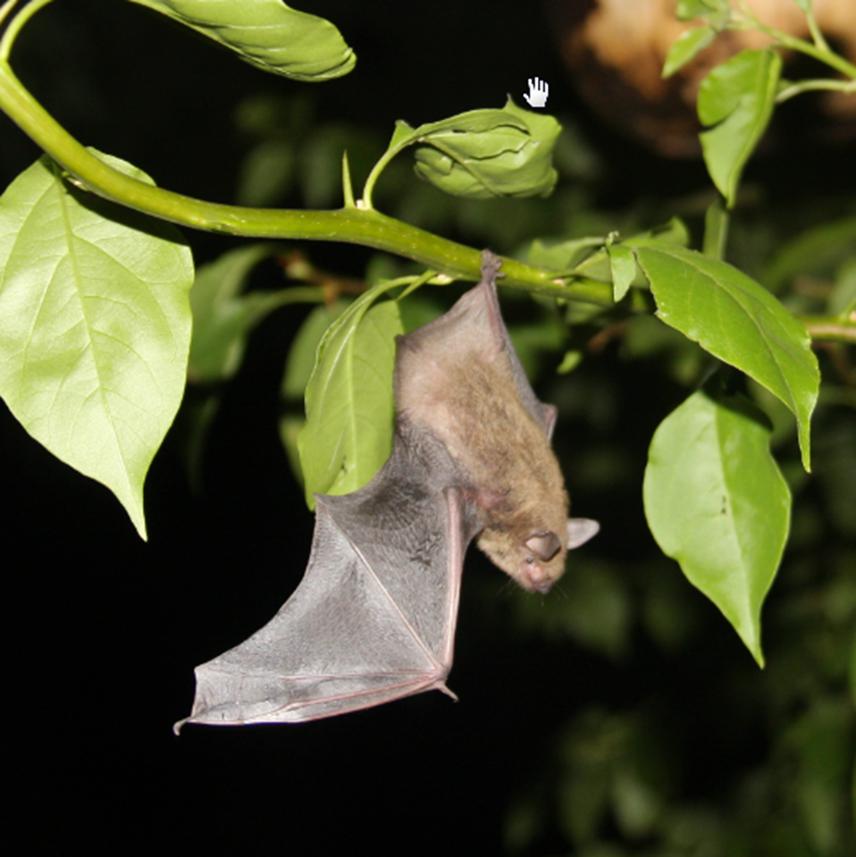Laura Alejandra Najera Cortazar
My PhD project is focused on assessing the genomic population structure and genetic diversity of Myotis bats in the Baja California Peninsula, related to environmental adaptation. I will also obtain diversity and distribution of bats ectoparasites and pathogens. This work will help determining the genetic basis of bats populations and to assess their richness and health, especially for the endemic species. Overall, this project will bring new scientific knowledge, databases and archive samples for bats in this region; providing evidence to support conservation strategies for vulnerable populations and their habitats. The work will be written up as scientific papers and will be presented at research conferences. I will also participate in informal talks to promote my work and the biodiversity of the peninsula. Ultimately, this project will promote the continuity of work with collaborators in the peninsula pro research and conservation of bats and other mammals.

The Cave bat (M. velifer) in Sonora, México.
Bats are distributed worldwide, occupying a wide variety of habitat types. Although most bats have great dispersal potential, some species can have restricted distributions due to ecological and environmental factors, which can be important issue for their conservation. On the Baja California Peninsula there are approximately nine species of Myotis bats. They are isolated from the rest of Mexico by the Sea of Cortés and the Pacific Ocean, with populations scattered along latitudinal and altitudinal gradients. Their taxonomic status is ambiguous, with their cryptic morphology and little genetic data available. Even less is known about their pathogens and parasites. This project will determine the genetic basis of the species status of these Myotis bats, assess their health and pathogen diversity, and test how environmental and ecological factors influence their distribution and population structure across the peninsula.
The Rufford Small Grant will help me to conduct the last field season for my PhD project, and collect data from along the peninsular and from continental Mexico. The research objectives of my project are:
1- Characterise the diversity and potential distribution of peninsular Myotis bats in relation to ecological and environmental parameters;
2- Determine bat ectoparasite and viral/bacterial pathogen diversity and relate it to bat diversity and distribution;
3- Evaluate at fine scale the population structure and rates of gene flow of Myotis species relative to ecological and geographical limits between these species;
4- Identify the genomic basis of genetic and ecological differentiation and potential environmental adaptations between these Myotis species.
To address these objectives I will be sampling over the Baja California Peninsula, including sites from the continental part of Mexico. I will use spatial modelling, Sanger sequencing and Next Generation Sequencing Technologies to conduct my genomic research work on both bats and parasites.
This project will provide vital base line knowledge on the distribution and diversity of bats in this region and their pathogens, thereby identifying important populations which might be vulnerable to current and future urban, agricultural and industrial development. Information about ecological distinctiveness among these bats will also aid to determine the influence of environmental change on dispersal and gene flow patterns, therefore contributing to management planning and conservation policies.
Ultimately, this project will also contribute to outreach and education work with local communities, and to form a network of collaboration among national and international entities to pursue the promotion and protection of the Baja California Peninsula biodiversity.